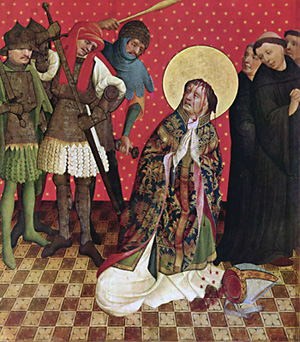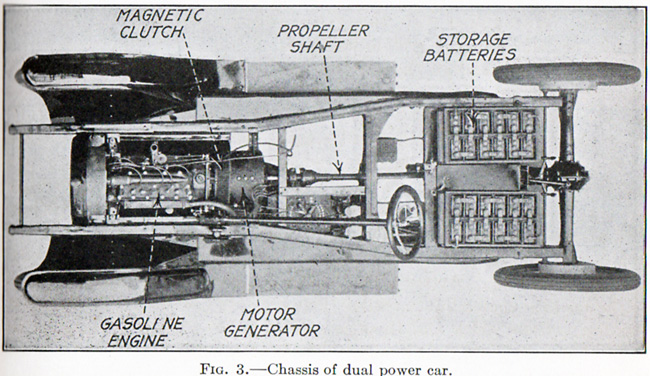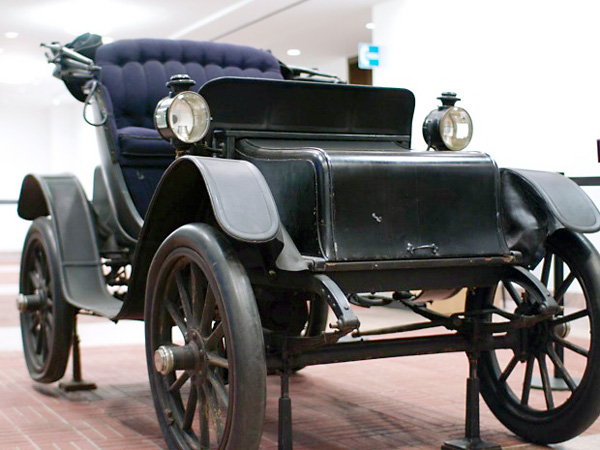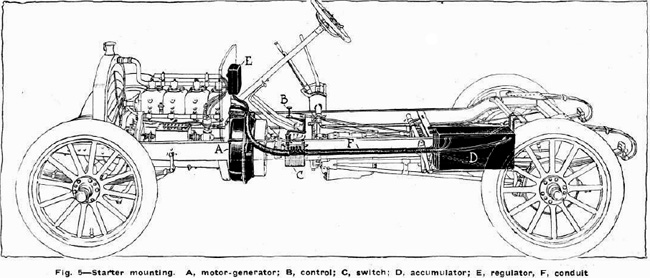The First Hybrid Automobile
Today, hybrid cars -- and the fourth tempter. The University of Houston's College of Engineering presents this series about the machines that make our civilization run, and the people whose ingenuity created them.
So what was the first hybrid car on the market? One website says Honda's 1999 Insight, quickly followed by Toyota's Prius. Now I've been reading my 1920 edition of The Gasoline Automobile. And it's as though I were watching T. S. Eliot's play, Murder in the Cathedral, about Thomas Becket.
 Let me explain: In one long scene, Thomas is tempted before he faces assassination for putting Church ahead of King. Three ghostly tempters come to dissuade him, and they offer the usual goods: safety and friendship, power and riches, the Pope's blessing. Becket resists them all. Then he relaxes. These things always come in threes, don't they? His testing is over.
Let me explain: In one long scene, Thomas is tempted before he faces assassination for putting Church ahead of King. Three ghostly tempters come to dissuade him, and they offer the usual goods: safety and friendship, power and riches, the Pope's blessing. Becket resists them all. Then he relaxes. These things always come in threes, don't they? His testing is over.
But then, a fourth tempter appears! Thomas cries "Who are you? I expected [only] three." The tempter smiles: "I...precede expectation." Then he offers martyrdom and sainthood. He offers Thomas what he wants most, the fattest prize of all. What a moral dilemma, the right thing for the wrong reason!
So back to my century-old book on cars: it begins by naming the kinds of automobiles. And they're the ones we all know: steam, electric, gasoline -- all competing for ascendency. But wait! The book goes on to list a fourth type, one that surely does precede our expectation. For it is a gasoline-electric car. There's a picture of a complete hybrid vehicle with a gasoline engine driving a generator. The generator in turn charges the car's batteries.
Auto makers had been considering hybrid cars from the beginning. The one in my book is the 1917 Dual Power car built by the Woods Motor Vehicle Company. Both the engine and brakes drove an electric generator that charged batteries. The batteries could either supplement the modest 12-horsepower engine at higher speeds, or they could power the car by themselves.

The Woods car was a complete hybrid, 82 years before Honda and Toyota got into the business. And it was far from the first. As early as 1901, auto maker George Fischer exported gasoline-electric buses to England. A New England builder [Knight Neftal] entered a combined gasoline-electric car in a hundred-mile endurance race a year later. Canada had a hybrid on the market in 1915.
This fourth automotive temptation was in full flower back when cars were still toys of the rich. But, only the wealthy could afford the $2700 Woods car. Henry Ford and others soon changed all that. When they did, the middle class quickly went with the first tempter -- cheap gas-buggies with an appetite for cheap fuel.
So hybrid cars have hovered -- just as plausible, just as subtly unexpected, as Eliot's fourth tempter. But, like the fourth tempter, they were right there all the time. We finally guzzled most of our cheap petroleum and began feeling the pinch. Only then did this fourth alternative emerge from the shadows that had let it pass unnoticed for such a very long time.
I'm John Lienhard at the University of Houston, where we're interested in the way inventive minds work.
G. W. Hobbs and B. G. Elliott, The Gasoline Automobile. (New York: McGraw-Hill Book Co., Inc., 1920/1915). The schematic diagram (above) is from this source.
D. A. Kirsch, The Electric Vehicle and the Burden of History. (New Brunswick, NJ: Rutgers University Press, 2000): See esp. Ch. 7.
Imagine my surprise when, after I'd finished this episode, I found that Kirsch (above) quoted this from Eliot's Four Quartets:
What might have been and what has been
Point to one end, which is always present.
And there is that same idea of the fourth tempter -- an idea so close, so familiar, that we don't even see it.
Hereis a fine account of the Woods car. The 1424 painting (above) titled The martyrdom of St Thomas is courtesy of Wikipedia Commons. For photos of the Woods Dual Power car, including the one below, see this excellent AutoBlogGreen webpage.

A few months after this episode first aired, I received a note from David Adolphus, Assoc. Ed. of Hemmings Motor News. He pointed out that the 1912 Rambler had most of the features of a full hybrid car. And he provided the schematic diagram of this car shown below:
